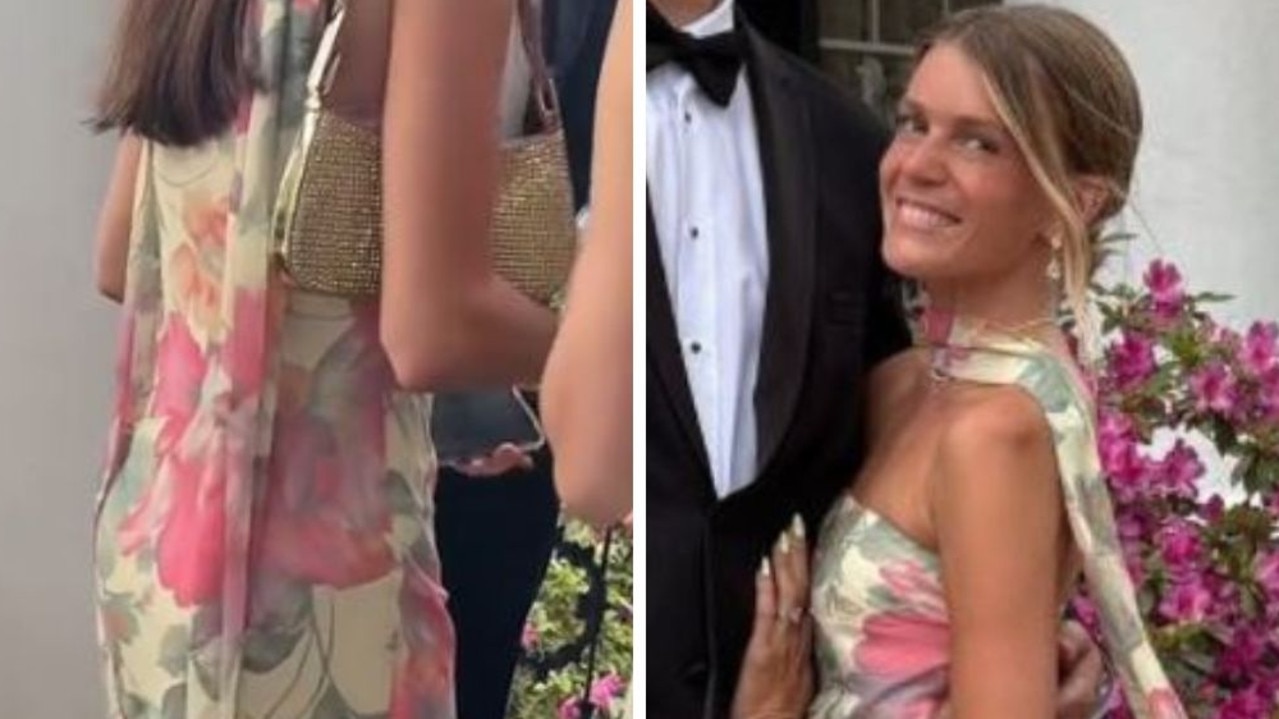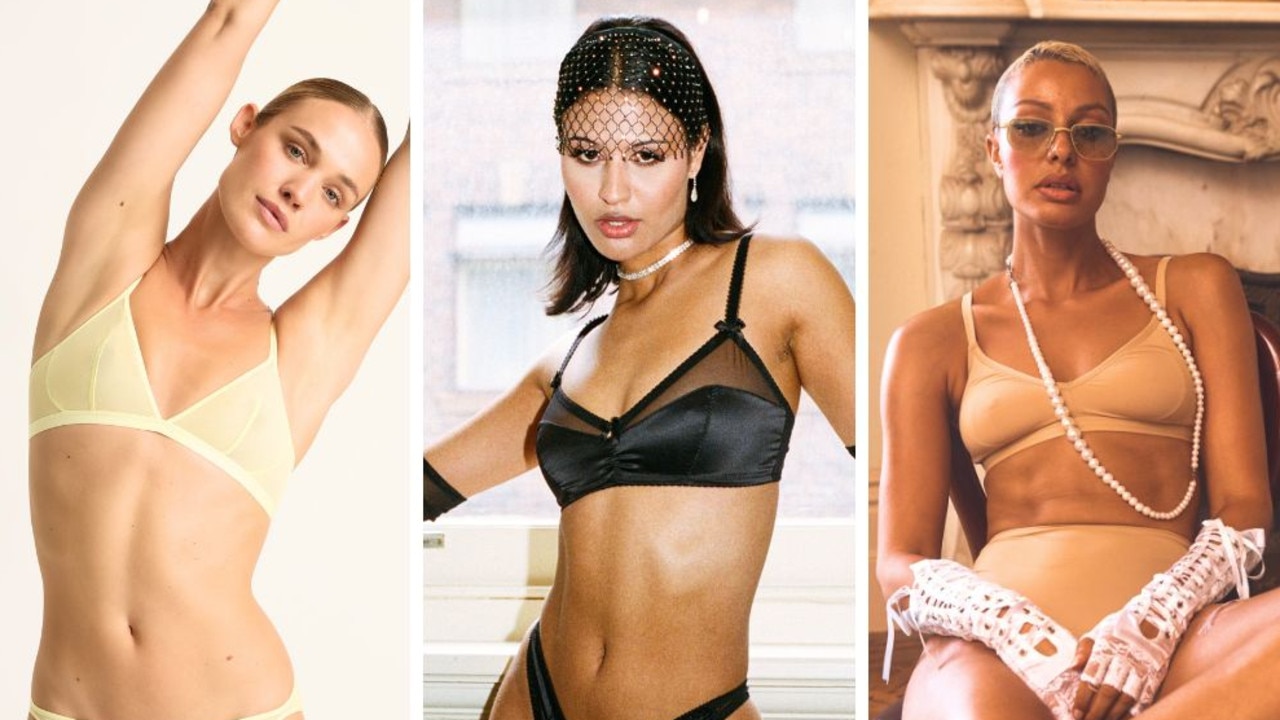Is lay-by staying ahead of the fashion pack?
‘AM I alone in feeling like the retail practice is only slightly less shame-inducing than actual shoplifting?’ Meg Mason explores the art of lay-by.

I’M IN the change room of a high-end boutique, trying on a pair of Proenza Schouler cigarette pants that I’m certain would be the solution to all my problems. But they’re $1285, which presents a different sort of problem.
Since I need them – I mean, really need them – I consider doing something I haven’t done since I was a desperate student. I roll the trousers into a ball and, heart racing, make for the front of the store. A shop assistant with a BMI in the dangerous range and cheekbones that could cut you spots me immediately. “Excuse me,” I say, mouth like a desert grave. “I would like to… lay-by these.”

Lay-by: am I alone in feeling like the retail practice that allows you to put a deposit down on items, then pay them off interest-free over an agreed period, is only slightly less shame-inducing than actual shoplifting? Or thinking that, in fashion land, it’s something often done but rarely talked about? Perhaps that’s because it was something our mothers were keen on? ‘Lay-by’ brings to mind dated furs and wide-brimmed hats selected from genteel Grace Brothers stores. Is lay-by hopelessly old-fashioned, or what?
Over a lifetime of reading fashion mags, I’ve never seen a modern think-piece by an industry insider extolling its sundry virtues – that it lets you nab new-season merch now and worry about the dollars later, of course, but also that it helps you shop thoughtfully, avoiding impulse and slowing the transition of an item from ‘amazing new purchase’ to ‘that old thing’. That it lets you curate your wardrobe with Wintour-like precision, and avoid the stampede for the only French size 38.
One of my most sartorially advanced – and cashed-up – pals lay-bys an entire wardrobe from a single store at the start of each season, usually around $6000-worth, and picks items off as she needs them (or has her husband finish them out as gifts, which provides the added benefit of him never seeing the original RRP). She says it’s a system that lets her pull together the perfect edit while stock levels are flush. Press your fashy-est friends, and my next down-
payment says many of them lay-by, too, whether or not they admit it.
“Do I feel embarrassed about it? I don’t think so,” says Violet*, 28, an arts academic who used to lay-by constantly as a teen, “but then I forgot about it and rediscovered it only a couple of years ago.”

Now, Violet will have two or three lay-bys on at a time at her favourite luxury retailer in Sydney’s eastern suburbs. A Dries Van Noten dress with a Flemish wood-cut print was a lay-by purchase ($1095 drip-fed over six weeks), as well as a $700 pair of Jil Sander loafers that landed her tootsies on style.com’s street-style round-up during fashion week.
“I’ve always had expensive taste, and I’m not ashamed that my salary doesn’t necessarily cover it,” she says. “I love that lay-by lets you dream about the piece while you’re waiting for it. Weirdly, too, when you pick it up and make that last payment, it feels like that’s all you really paid for it.”
As a genuine fashion lover with exemplary retail manners, Violet doesn’t opt out of lay-bys or come back three months later asking for the sale price, practices that can make it the bane of a retailer’s bottom line. In general, stores decline to return your deposit if you do that.
Fashion now moves so quickly, says Eva Galambos, proprietor of designer boutique Parlour X, that letting a customer keep a piece off the shop floor for three months, then potentially changing their mind as a fresh collection rolls in, isn’t feasible for most independent retailers.
As such, Parlour X offers two-week terms (compared to the standard department-store six) and requires a 50 per cent non-refundable deposit up front (as opposed to the more common nominal down-payment of 20 or 30 per cent, which may be exchanged for store credit in some cases). “Our version is stricter,” says Galambos, “but it’s a compromise that safeguards us while accommodating the client who might have seen something they want, but [has to wait for] pay day. We want to be as obliging as possible in a difficult industry.”

Galambos’s clients tend to be well-mannered about it. And since the store’s stock follows the northern hemisphere seasons, most of them use lay-by as a wardrobe-planning tool, rather than because they’re skint. “If you see a wool coat you love from the winter collections, but it’s 32 degrees outside, why would you take it now?” asks Galambos. That’s just good sartorial planning, and there’s certainly no stigma attached to it in her mind. “If you’ve fallen in love with something and you know you’ve got the means to pay for it soon, there’s really no problem.”
And yet not all retailers are into it, no doubt because times are tough enough without having to wait to get paid (landlords don’t let retailers lay-by the rent, nor staff their wages).
On the high street, Witchery gives you four weeks for a 20 per cent depoz, and Country Road, four weeks, with 25 per cent down and fortnightly payments – but neither was keen to comment for this story. Topshop does not offer lay-by. However, an increasing number of high-end Australian designers do – Zimmermann gives you a month to pay with 30 per cent up-front, Ginger & Smart the same, with a 25 per cent deposit, and Carla Zampatti offers eight-week terms.
Department stores, being the shops most often associated with the practice back in the day, are obliging, although I’m pretty sure they’d prefer you to use their store-card programs, given the choice. “We want to make it easy for our customers to purchase at Myer and we accept a range of payment options, including lay-by,” Myer’s general manager for corporate affairs, Jo Lynch, says. Although, she adds, “We have found that more of our fashion-conscious customers prefer to purchase the item straight away so they can wear it while it’s still on-trend.”
For the shopper, lay-by can prove financially savvier than putting a purchase you can’t 100 per cent afford right now on a credit card. Alice Crawley, who trained as a women’s financial advisor after working her way out of $185,000 in card debt run up in her twenties, is a diehard advocate: “Lay-by helps us prepare and plan for items we really want, but the instalment process stops us overspending.” And, she says, “That delayed gratification can feel more satisfying and be key to spending money wisely and being in control.” Rather than payWaving what feels like play money onto a soon-to-be-maxed MasterCard? Yes.
“Lay-by helps me spend only the money I have, and be a little bit realistic and budget-wise,” agrees Violet. “There can be a snobbery around fashion; if you have to ask the price, you can’t afford it. But there’s more than one way to buy something, and I think everyone should be able to have beautiful pieces they love, even if it takes a little bit longer to get their hands on them.”
It might be time to reclaim lay-by as a chic and savvy fashion practice. Or at least reclaim half now, and the rest later.
Follow Meg on Twitter @MEG_MASON



